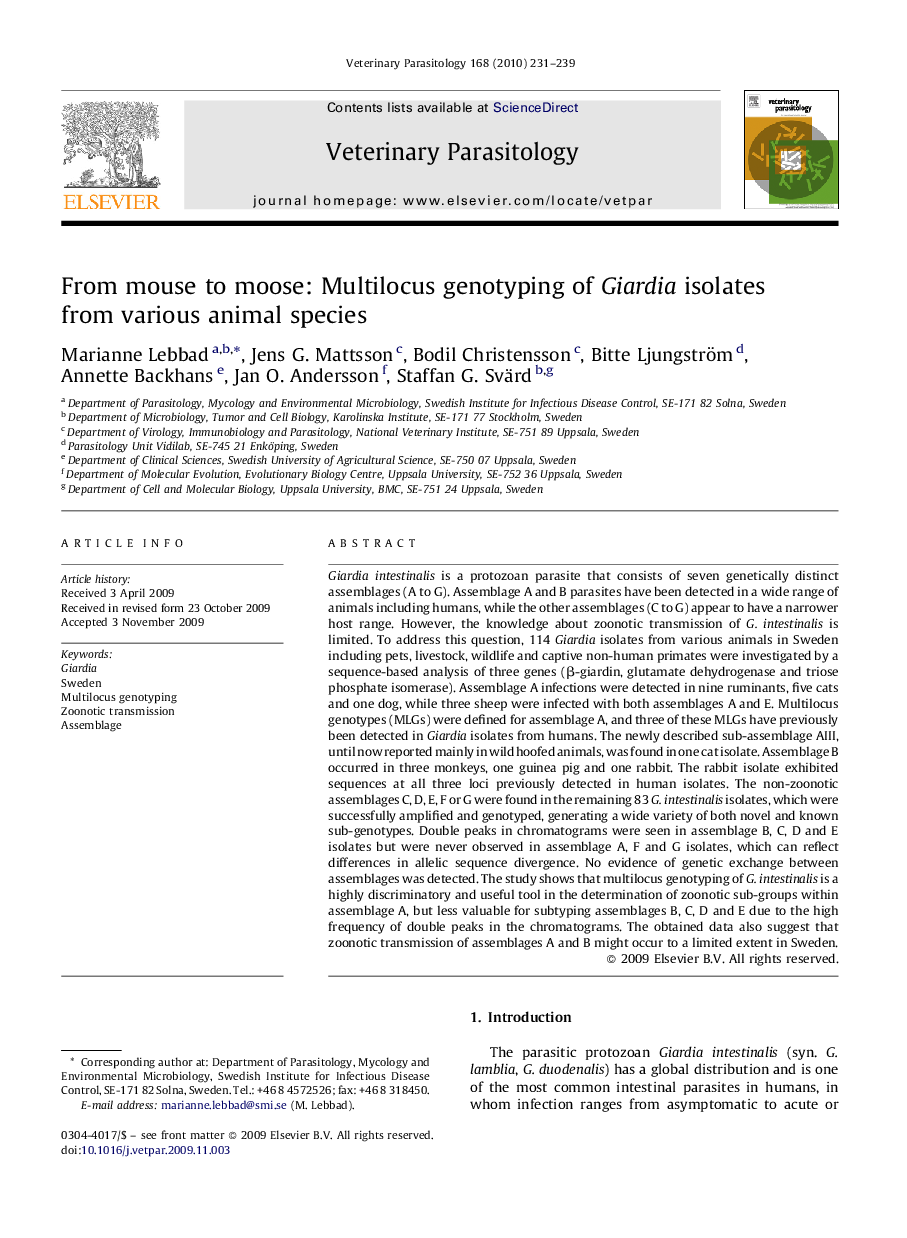| کد مقاله | کد نشریه | سال انتشار | مقاله انگلیسی | نسخه تمام متن |
|---|---|---|---|---|
| 2470782 | 1555744 | 2010 | 9 صفحه PDF | دانلود رایگان |

Giardia intestinalis is a protozoan parasite that consists of seven genetically distinct assemblages (A to G). Assemblage A and B parasites have been detected in a wide range of animals including humans, while the other assemblages (C to G) appear to have a narrower host range. However, the knowledge about zoonotic transmission of G. intestinalis is limited. To address this question, 114 Giardia isolates from various animals in Sweden including pets, livestock, wildlife and captive non-human primates were investigated by a sequence-based analysis of three genes (β-giardin, glutamate dehydrogenase and triose phosphate isomerase). Assemblage A infections were detected in nine ruminants, five cats and one dog, while three sheep were infected with both assemblages A and E. Multilocus genotypes (MLGs) were defined for assemblage A, and three of these MLGs have previously been detected in Giardia isolates from humans. The newly described sub-assemblage AIII, until now reported mainly in wild hoofed animals, was found in one cat isolate. Assemblage B occurred in three monkeys, one guinea pig and one rabbit. The rabbit isolate exhibited sequences at all three loci previously detected in human isolates. The non-zoonotic assemblages C, D, E, F or G were found in the remaining 83 G. intestinalis isolates, which were successfully amplified and genotyped, generating a wide variety of both novel and known sub-genotypes. Double peaks in chromatograms were seen in assemblage B, C, D and E isolates but were never observed in assemblage A, F and G isolates, which can reflect differences in allelic sequence divergence. No evidence of genetic exchange between assemblages was detected. The study shows that multilocus genotyping of G. intestinalis is a highly discriminatory and useful tool in the determination of zoonotic sub-groups within assemblage A, but less valuable for subtyping assemblages B, C, D and E due to the high frequency of double peaks in the chromatograms. The obtained data also suggest that zoonotic transmission of assemblages A and B might occur to a limited extent in Sweden.
Journal: Veterinary Parasitology - Volume 168, Issues 3–4, 25 March 2010, Pages 231–239